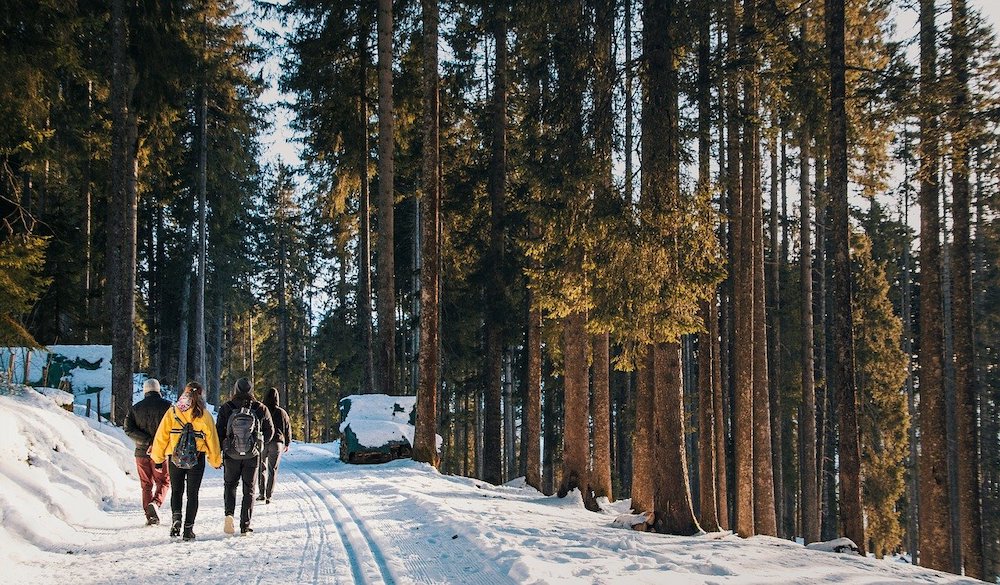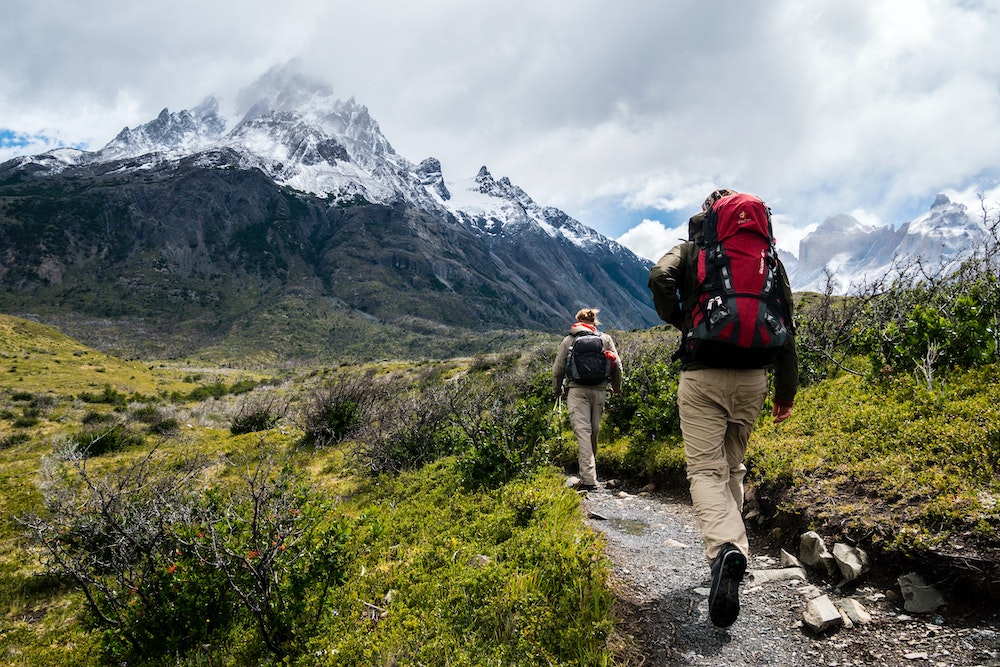For those who enjoy it, hiking is a wonderful pastime. Fresh air, exercise and being surrounded by nature all add up to a beautiful experience. However, there are certain things to keep in mind when hiking in winter, especially for the first time. Read on to learn the best tips and tricks to make your winter hiking experience a positive one.
Start with Good Gear
Winter hiking is a different world compared to other times of the year, and you’ll need different hiking gear to handle it. No two hikers will take exactly the same equipment, but there are a few basics you should invest in:
- Snowshoes or crampons: If it’s snowing where you’ll be hiking, a solid pair of durable, waterproof snowshoes is essential. Crampons are the spikes that attach to your feet for better traction in snow. If you’re taking along a pair of those, practice with them first to get used to how they feel.
- Waterproof pants and jacket: Similar to snowshoes, winter conditions are often damp. Waterproof clothing is ideal for staying dry and warm.
- Winter socks: Your toes are the first place you’ll feel cold, so bring at least two pairs of warm winter socks to keep your feet toasty in your snowshoes.
- Quality hats: Whether you wear a beanie, a trapper hat, or a wool cap that covers your mouth and chin, a quality hat will help keep your body heat in.
- Quality gloves: Similar to socks and a hat, a pair of sturdy, waterproof, warm gloves will keep your fingers from getting cold as your hike progresses.
Look for coupons or end-of-season sales so you’re not tempted to purchase the cheapest options. Your hike will be much more enjoyable if you aren’t worried about whether or not your hiking boots will stay together!
Dress in Layers
Temperatures can vary from the base of the trail to the summit of the mountain, so dress in layers. Try long underwear beneath your waterproof pants and shirt. Wear a light fleece jacket and keep your waterproof or insulated jacket in your pack in case you need to layer up.
Also, bring extra socks and gloves. If your feet or hands get wet in cold weather, they’re susceptible to frostbite, so change out wet items with dry ones to stay safe.
Bring Safety Gear and Skills
Similar to clothing, pack safety gear. This includes a trail map, a first aid kit, a multi-tool or pocket knife, a compass, and hand-warming packets.
Even if you don’t intend to sleep outside, it’s a good idea to bring along a sleeping bag, a down parka and a cell phone. It will make your pack heavier, but it will also prevent frostbite in the event you accidentally have to stay on the mountain overnight.
It’s also a good idea to learn some basic survival skills before hiking in winter. Know how to light a fire without matches, how to dress a wound, and how to re-warm frostbitten skin. Ideally, you’ll never use such skills, but in an emergency, you’ll be very grateful you practiced them before your hike!
If you’ll be camping, see our related stories: Camping Gear for Beginners and Camping for Beginners.
Check the Weather

This one may seem self-explanatory, but it’s an essential tip to a successful winter hike. Don’t just look at the temperature – check wind conditions, the chance of rain, avalanche reports and when you’ll have daylight hours.
Avoid hiking in winter if the conditions look dangerous. The mountains will still be there next weekend, so you’re better off waiting if the weather isn’t ideal.
Don’t Forget Snacks and Hydration
Exercising in cold weather burns more calories than it does in warm weather. Your body is working to keep you warm plus working on the hike itself. Make sure you have nutrient-dense snacks on hand, like protein bars, mixed nuts, and dried or durable fresh fruit.
Ideally, your snacks will be items you can eat without stopping. If you sit down to picnic, your muscles will get cold and have a hard time warming up when it’s time to get going again. Think portable snacks you can eat while standing or walking.
Also, keep your water bottle close at hand. In the cold, you might not register thirst as effectively as when it’s warm out. If you feel physically thirsty, you’re already dehydrated, so make sure you’re constantly sipping. Invest in an insulated thermos so your water doesn’t freeze.
Bring a Friend or Two
Especially for new hikers, bringing an experienced friend can make the entire experience more enjoyable. Not only will they have knowledge about the best gear and trails, but they may also have extra equipment you can borrow. They’ll also know how to handle any inclement situations you may encounter.
Plus, one of the best stress relief tips around is sharing adventures with friends. Hiking in winter is a one-of-a-kind experience, and sharing that with those closest to you will bring you closer together.
Get Outside
A winter hike can be a beautiful, relaxing way to spend your weekend, so do your research and then get outside!
– Jordan McDowell is a writer, certified gearhead, and a lover of great outdoors. He enjoys writing about the latest trends in outdoor gears and sometimes writes for companies such as Shop Escape Outdoors.

